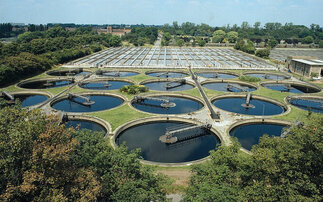BusinessGreen explores how businesses can help deliver on the pledge to 'make cities and human settlements inclusive, safe, resilient and sustainable'
Targets
11.1 By 2030, ensure access for all to adequate, safe and affordable housing and basic services and upgrade slums.
11.2 By 2030, provide access to safe, affordable, accessible and sustainable transport systems for all, improving road safety, notably by expanding public transport, with special attention to the needs of those in vulnerable situations, women, children, persons with disabilities and older persons.
11.3 By 2030, enhance inclusive and sustainable urbanization and capacity for participatory, integrated and sustainable human settlement planning and management in all countries.
11.4 Strengthen efforts to protect and safeguard the world's cultural and natural heritage.
11.5 By 2030, significantly reduce the number of deaths and the number of people affected and substantially decrease the direct economic losses relative to global gross domestic product caused by disasters, including water-related disasters, with a focus on protecting the poor and people in vulnerable situations.
11.6 By 2030, reduce the adverse per capita environmental impact of cities, including by paying special attention to air quality and municipal and other waste management.
11.7 By 2030, provide universal access to safe, inclusive and accessible, green and public spaces, in particular for women and children, older persons and persons with disabilities.
11.A Support positive economic, social and environmental links between urban, per-urban and rural areas by strengthening national and regional development planning.
11.B By 2020, substantially increase the number of cities and human settlements adopting and implementing integrated policies and plans towards inclusion, resource efficiency, mitigation and adaptation to climate change, resilience to disasters, and develop and implement, in line with the Sendai Framework for Disaster Risk Reduction 2015-2030, holistic disaster risk management at all levels.
11.C Support least developed countries, including through financial and technical assistance, in building sustainable and resilient buildings utilizing local materials.
Progress to date
The progress report for SDG11 makes for bleak reading, confirming that delivering sustainable urban development is one of the biggest challenges set by the SDGs. "With rapid urbanization, many cities are facing challenges in managing population growth, ensuring there is adequate housing and resilient infrastructure to support these growing populations, and addressing the environmental impacts of expanding cities and vulnerability to disasters," the UN states.
Rapid globalisation, which in recent years has seen the proportion of the global population living in cities top 50 per cent for the first time in human history, has triggered huge environmental and development challenges.
Between 1990 and 2014 the share of the global urban population living in slums may have fallen from 46 per cent to 23 per cent, but the rapid expansion of the overall urban population means the total number of people living in slums has risen from 689 million to 881 million.
This surge in the number of city dwellers has also seen one of the main environmental benefits of urban living eroded. Population density in cities is falling as they expand, often in an unmanaged fashion. Globally, the average rate of physical expansion of cities is about one and a half times that of population growth. Anyone who has ever visited an emerging economy mega-city will be unsurprised to hear the trend is most stark in Eastern and South-eastern Asia, sub-Saharan Africa and Central and Southern Asia.
The fall in urban density is driven in part by improving per capita incomes and transport links, but it also brings with it significant new challenges in the form of lost agricultural land, worsening congestion, and generally higher environmental impacts.
It also makes it harder to deliver the basic infrastructure many cities still lack. The UN's latest progress report confirms that managing solid waste "continues to be a challenge in many regions with significant and adverse effects from uncollected waste in cities, including direct and indirect effects on the health of residents and the environment".
A study of 213 cities found just a quarter of municipal solid waste is collected, with the share falling to less than half in the cities in sub-Saharan Africa.
Developing world cities face similar challenges improving resilience in the face of natural disasters and climate impacts. Unplanned and rapid urbanisation and poor land management, together with non-risk informed policies and investments are major underlying risk drivers of disaster mortality," the UN notes, and as result almost 90 per cent of disaster-related deaths between 1990 and 2013 occurred in low and middle-income countries.
The Sendai Framework for Disaster Risk Reduction was agreed in 2015 and provides a template for countries to develop more effective disaster resilience strategies that are likely to become more important as climate impacts escalate. However, a recent UN survey found that of the 87 states that responded to the questionnaire, only 50 reported they have national disaster risk reduction strategies and 34 have local strategies in place. More encouraging progress is being made through investments in
Moreover, in 2015, out of 95 countries, 84 reported investing in drainage infrastructure and the adoption of building codes, but basic resilience remains a major issue for many large cities.
Meanwhile, industrialised and developing world cities alike continue to be gripped by a public health crisis in the form of air pollution. In 2016, 91 per cent of the urban population still breathed air that did not meet the WHO's Air Quality Guidelines value for particulate matter (PM 2.5) and more than half was exposed to air pollution levels at least 2.5 times above that safety standard. The emergence of electric vehicles and the growing adoption of clean air policies in European and US cities are yet to bring air quality into line with health standards in many regions.
Business implications
It is not just the majority of the global population that resides in cities, it is also the bulk of economic activity. Cities have always been the primary crucibles of business activity and as such SDG11 promises to address some of the major challenges businesses face and open up a raft of new opportunities for the private sector.
Delivering on SDG11 should drive significant new infrastructure investment, boost the global construction sector, and usher in a whole new sector in the form of fast-emerging 'smart city' technologies.
Meanwhile, improved air quality, road safety, more public transport and green spaces all promise to enhance employee health and productivity, while minimising costs to businesses from congestion and pollution. Similarly more resilient cities with clearer disaster management plans are likely to be critical to minimise the costs to businesses and insurers associated with rising climate risks.
However, the lack of clearly quantifiable targets or specific definitions for sustainable urban development, coupled with the slow progress to date in tackling urban problems and rapidly growing urban populations, especially in the developing world, all serve to fuel fears that businesses will continue to see unsustainable urban planning act as a drag on development.
Business risks
The primary risks associated with SDG11 will arise from any failure to deliver on the goals.
As the leading development economist Lord Nicholas Stern has long argued the only long term development path available is a sustainable development path. This is particularly apparent in cities, where endless congestion, choked air, and the insecurity created by slum conditions, make running a business infinitely harder.
Poor air, limited waste management services, and weak public transport provision all translate into higher costs, lower productivity, increased risks, and worse labour markets for businesses.
As has been evidenced in countless developing world cities, poorly planned urban development to provide new offices for businesses can create reputational risks as impacted communities respond to the resulting displacement and/or gentrification.
However, government efforts to deliver on SDG11 could also create some business risks. The private sector is likely to be required to contribute to the considerable cost of essential urban infrastructure upgrades, while new planning rules could slow development and new mega-projects could lead to short term disruption for businesses.
Business opportunities
The business opportunities arising from SDG11 are both multi-faceted and obvious. More sustainable cities are simply a better environment in which businesses can operate. They lead to lower air pollution, less crime, and less congestion, all of which result in lower running costs, as well as a healthier, wealthier and more productive populous from which to draw employees and consumers.
They are also essential to continued economic development, especially in climate vulnerable emerging markets. The wider adoption of the Sendai Framework will be of critical importance to many businesses facing rising risks with the insurance industry likely to put particular value on enhanced urban resilience efforts.
Similarly, the global tourism industry stands to benefit from the pledge to protect the world's cultural and natural heritage, although all businesses also stand to gain from employee and customer bases with the freedom to enjoy such resources.
More broadly, the commitment to tackle slums and provide drastically improved urban transport infrastructure provides a huge investment opportunity for many businesses, as well as a critical path for delivering efficiency savings and greenhouse gas emissions reductions through new smart city, internet of things, and AI enabled technologies.
Effective sustainable urban development and planning regimes should also help trigger progress against numerous other SDGs through enhanced resource and energy efficiency, reduced air pollution, and city environments that aid healthier and happier lifestyles. In short, the pace of the global revolutions in green buildings, smart grids, and electric vehicles will be determined to a large extent by what happens in cities.










